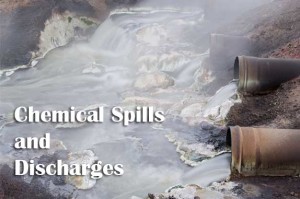
Threat plans for earthquakes have become a necessity in many states in the United States such as California and Oregon that are prone to these environmental hazards. Earthquakes are seismic tremors that can cause widespread damage and destruction. These disasters can also lead to other related incidents such as landslides, surface vault ruptures and liquefaction.
Earthquake precautions and preparation are unavoidable, especially if you live in an earthquake prone zone.
Preparing Threat Plans for Earthquakes
Principal Threats during Earthquakes
- Building structures and heavy furniture causing harm or injuring employees
- Gas leakage or electrical short circuits that cause building fires
- Exposure to dangerous chemicals that were kept in storage
Stay Prepared with a Threat Plan When Earthquakes Occur
- Find a secure place to hide. This could be a solid table, desk or an interior wall. Keep away from shelves, tall furniture and windows. The safe place should be easily and quickly accessible.
- Employees must be given sufficient practice to execute drop, cover and hold-on procedures as part of their earthquake – emergency preparedness training.
- Employees must familiarize themselves with drop, cover and hold-on procedures once every few months to avoid indecision and panic when an earthquake actually occurs.
The following precautionary measures must be included while creating threat plans for earthquakes:
- Do not move from the secure place until the tremors stop. Then, check for injuries. If uninjured, assist those who need help. Stay on guard for aftershocks.
- Be on high alert for fires. Earthquakes make facilities particularly vulnerable to fires owing to damaged gas or electrical lines and appliances.
- Take the stairs and not the elevator while evacuating the building. Watch out for falling debris.
- If outdoors, keep away from buildings as they are particularly dangerous during earthquakes, especially up to a distance of ten feet. Stay low and protect your head.
- Share earthquake threat plans with staff and personnel.
- Train employees on standard procedures related to earthquake safety and on how to use fire extinguishers.
- Conduct surveys to detect potential threats that can be exploited in the event of an earthquake, to be included in the plan.
- Tables on which desktops are placed should be sturdy and not flimsy.
- Fasten desktop computers, stereo systems, TVs and other appliances using materials such as Velcro, chains, cables or cords. These chains, cables and cords can be linked to walls or the table surface.
- Use vibration isolators that are securely anchored and equipped with seismic snubbers while installing heavy equipment.
- Follow the recommendations of the equipment manufacturer.
- Brace cripple walls. Add vertical studs to their top and bottom with sill plates in between.
- Use long shank open-eye hooks when hanging pictures and mirrors.
- Prevent gas leakages and power outages by installing flexible connections.
- Install flexible gas and water lines to avoid leaks and damage.
- Secure propane tanks by anchoring and bracing them. Attach gas cylinder to walls by means of chains.
Evacuation Guidelines to be Included in Threat Plans for Earthquakes
Establish:
- Circumstances when it would be required to evacuate premises
- Situations in which taking shelter indoors is preferable
- Designated personnel who will conduct the evacuation drill
- Detailed evacuation plans, including routes, maps, exits and alternatives
- How to assist those with physical conditions
- How to communicate with individuals when there is a language barrier
- Use of protective equipment such as escape respirators
Response/Recovery
Building wreckage
Rescue teams enter wrecked buildings after earthquakes to
- Assist survivors
- Put out flames
- Cut off the power supply to appliances
- Take stock of structural vulnerabilities
- Assess the amount of airborne contaminants
The executive in charge of the incident command system during earthquake preparedness and response efforts manages the entire staff. Additional personnel can also be deployed to ensure the safety of response teams by:
- Taking precautionary measures towards the health and safety concerns of personnel
- Identifying, assessing and archiving all casualties suffered by response teams
- Controlling the entry into the site
- Making the use of mandatory protective gear wherever required
- Mitigating post incident hazards
Potential Threats
The health and safety of response teams is of prime concern to be included in threat plans for earthquakes during post incident activities. Common hazards to guard against include:
- Sudden and unexpected basement flooding
- Spread of pathogens from sanitary sewer systems
- Exposure to smoke, dust, ammonia, battery acid, fuel and so on
- Flammability and toxicity due to gas leaks
- Lack of oxygen
- Structural vulnerabilities
- Space constraints
- Difficulty in moving around the site due to damaged or blocked passages, fallen structures, glass and debris
See for yourself how the application works
Witness our cloud based platform’s security capabilities in action
Play around with the software and explore its features
Compare and choose a solution that’s relevant to your organization
Consult our experts and decide on a pricing mechanism
Disasters
<!– [carousel id=”1780″ items=”4″ items_desktop=”3″ margin_right=”5″ navigation=”false”] [item img_link=”https://www.stayinbusiness.com/wp-content/uploads/2016/02/Chemical-Spills-Discharges.jpg” href=”https://www.stayinbusiness.com/resource/disaster-recovery/chemical-spills-and-discharges/”][/item] [item img_link=”https://www.stayinbusiness.com/wp-content/uploads/2016/02/Riots-Public-Disturbances.jpg” href=”https://www.stayinbusiness.com/resource/disaster-recovery/riots-and-public-disturbances/”][/item] [item img_link=”https://www.stayinbusiness.com/wp-content/uploads/2016/02/Terrorism.jpg” href=”https://www.stayinbusiness.com/resource/disaster-recovery/terrorism/”][/item] [item img_link=”https://www.stayinbusiness.com/wp-content/uploads/2016/02/worst-product-recall.jpg” href=”https://www.stayinbusiness.com/resource/disaster-recovery/product-recall/”][/item] [/carousel] –?




